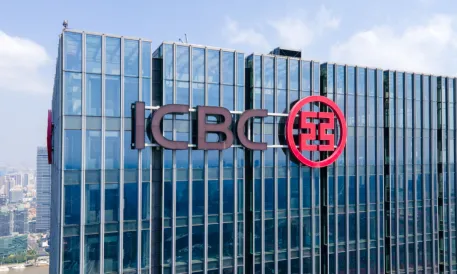
Matt Odom via Bloomberg News
Imagine a pristine, white fortress in the digital realm, much like a freshly cleaned surface by Clorox. The tall and seemingly impervious walls guard the secrets and operations within. Yet, amidst the binary codes and data flow, a malicious virus seeps in, much like a stubborn stain, slowly spreading its tendrils, corrupting the purity of the fortress.
This is the story of the recent cyberattack on Clorox, a giant in cleanliness, now faced with the task of cleaning up its own digital mess, a tale that echoes as a warning to all in the vast expanse of cyberspace.
Clorox, a company that enjoyed revenues exceeding $7 billion in 2022 and employs over 9,000 staff, owns many well-known household goods brands such as Brita, Clorox Cleaning, Burt’s Bees, Glad, Kingsford, PineSol, 409, and many more. The cyberattack’s impact reverberates within the company and across households that rely on its diverse range of products.
The attack was potent enough to compel them to pull some of their systems offline and revert to manual ordering, muddling up their operations and putting a crimp in their product availability. It’s a big deal because it’s not just throwing a wrench in their workflow; it’s also taking a swipe at their quarterly earnings.
The company asserts they’ve bottled up the attack but are still operating at a diminished rate. So if you spot fewer Clorox products on the shelves, this cyber muddle is the culprit.
What We Know?

Income Surfer via Seeking Alpha
The cyberattack on Clorox was unveiled on August 14th, sending shockwaves through the corporate and consumer worlds. The assault forced the company to pull the plug on some of its systems, causing a significant disruption in its daily operations.
According to an 8-K filing, the shutdown was part of attempts to remediate unauthorized activity on the company’s network. Despite the implementation of workarounds for certain offline operations, the breach has already caused and is expected to continue to cause, disruption to parts of its business operations.
The company’s spokesperson confirmed that the incident impacted its systems. “While we are working diligently to respond to and address this issue, these systems will remain offline as we work to add additional protections to secure them further. As a result, some operations are temporarily impaired,” said the Clorox’s spokesperson. The company’s plants and distribution centers have activated business continuity plans to fulfill placed orders, showcasing their resilience and commitment to their customers even in the face of adversity.
While the exact nature of the attack remains undisclosed, the prolonged operational disruptions hint at a possible ransomware attack. Ransomware gangs typically encrypt victims’ systems to induce downtime costs, forcing organizations to pay the ransom if they want to resume operations.
Clorox has engaged third-party experts to investigate the nature and scope of what’s described as an “ongoing attack,” reflecting their proactive approach to understanding and mitigating the breach’s impact.
The attack’s announcement in August further highlights the evolving cyber landscape, especially with the SEC’s new cyber disclosure rule finalized in July this year. It’s a clear sign of how cyber threats are becoming more significant and affecting businesses in new and unprecedented ways.
With its far-reaching implications, the Clorox cyberattack stands as a testament to the critical importance of robust cybersecurity measures and the need for continuous vigilance and preparedness in the digital world.
How Did This Attack Happen?

via The Clorox Company
In the world of cyberattacks, specifics can often be hard to come by, especially in the immediate aftermath of an attack. The Clorox cyberattack is no exception. The cyberattack’s nitty-gritty on Clorox remains in mystery, and the company has been tight-lipped about the exact nature and extent of the breach.
The company has not spilled the beans on whether it was a ransomware attack, but it was compelled to yank systems offline to bottle up the attack. And no hacking group or ransomware gang has claimed the attack.
However, by examining the observable impacts and industry trends, we can piece together a likely scenario and glean insights into the technical aspects of the attack:
Possible Ransomware Attack
The significant operational disruption, the need to pull systems offline, and the ongoing impairment of Clorox’s operations strongly suggest the deployment of ransomware.
In such attacks, malicious software is used to encrypt the victim’s data, rendering systems unusable. The attackers then demand a ransom for the decryption keys.
The fact that Clorox has not fully restored its systems could indicate that they are in the process of securing and rebuilding its network infrastructure to ensure that no remnants of the malicious software remain.
Attack Vector
While Clorox has not disclosed how the attackers gained access to their systems, common attack vectors include phishing emails, exploiting unpatched vulnerabilities, or using malware-laden software to deliver ransomware to the victim’s systems.
The attackers might have used sophisticated social engineering techniques to trick employees into revealing their credentials or clicking on malicious links, providing the attackers with a foothold in Clorox’s network.
Silence on Ransom
Clorox’s silence on whether a ransom was demanded or paid is a strategic move. Disclosing such information could give the attackers insights into the company’s internal incident handling and investigation strategies.
Clorox is likely working with law enforcement agencies and cybersecurity experts to trace the attack’s origins and understand the extent of the breach.
Absence of Public Claim
The fact that no hacking group has publicly claimed responsibility for the attack could suggest a more targeted and stealthy approach by the attackers. It’s possible that the group behind the attack is engaged in corporate espionage, seeking to gather sensitive information rather than just extort money.
The absence of a public claim also makes it harder for investigators to determine the attackers’ identity, as they cannot compare the attack patterns and techniques with known cybercriminal groups.
Technical Defense Measures
In response to the attack, Clorox will likely enhance its cybersecurity infrastructure by patching vulnerabilities, updating and strengthening firewalls, and implementing more robust network monitoring tools to swiftly detect and respond to unauthorized activities.
The company might also conduct a thorough audit of its network to identify and remove any backdoors or malware the attackers could have installed.
In conclusion, while the exact technical details of the Clorox cyberattack remain undisclosed, the observable impacts and industry trends provide insights into the likely nature and mechanics of the attack.
The incident underscores the critical importance of robust cybersecurity measures, continuous monitoring, and employee training in safeguarding organizations against ever-evolving cyber threats.
Join Thousands of Weekly Readers
Enter your email for instant access to our EXCLUSIVE ebook & discover the Roadmap for Moving to ROI-Led Cyber Risk Management.
Join Thousands of Weekly Readers
Enter your email for instant access to our EXCLUSIVE ebook & discover the Roadmap for Moving to ROI-Led Cyber Risk Management.
Our Key Takeaways

Katie Malone for Engadget
1. Human Vulnerability Echos
The Clorox attack, much like the MGM Resorts breach, spotlights the pivotal role of human vigilance in cybersecurity. The MGM attack was orchestrated through a simple phone call, exploiting human vulnerability to gain unauthorized access.
Similarly, the Clorox attack underscores the need for comprehensive cybersecurity awareness and training. Even the most fortified networks can be breached through social engineering, emphasizing the critical importance of human factors in maintaining robust cybersecurity defenses.
2. Supply Chain Domino Fall
The attack’s ripple effect on the supply chain underscores the interconnectedness of modern industries.
A breach in one sector can reverberate across various domains, highlighting the need for cross-industry cybersecurity collaboration.
3. The Shadow of Cyberattacks
Beyond immediate operational disruption, the Clorox attack could potentially impact market share and consumer trust in the long haul.
It emphasizes the importance of not just robust defense but also swift and transparent incident response and recovery.
4. Evolving Threat Landscape Navigation
This Clorox hack and the recent MGM Resorts incident is a snapshot of the broader cybersecurity landscape, characterized by increasing frequency and sophistication of attacks.
The future of cybersecurity lies in a combination of advanced technical solutions, continuous employee training, international cooperation, and stringent regulations. Organizations must adopt a holistic approach, understanding cybersecurity is an ongoing journey, not a destination.
Conclusion

In the unfolding narrative of the Clorox cyberattack, the stained walls of the digital fortress echo the challenges faced. Much like a stubborn stain, the breach has left its mark, highlighting the vulnerabilities even within the most robust systems.
As we conclude, the metaphor of the stained fortress stands clear. It’s a reminder for all to strengthen digital defenses against evolving cyber threats.
The Clorox incident emphasizes the significance of preparedness and continuous learning in cybersecurity. It’s a call for all to ensure their cyber strategies are resilient, adaptive, and ready for future challenges.
The question remains: Are we fortified enough for the battles ahead in the digital world?
Note: This blog post is based on information available as of Sept 27, 2023, from various news sources. The situation might evolve, and readers are advised to stay updated through official channels.












































One Response
Normally I do not read article on blogs, but I would like to say that this write-up very forced me to take a look at and do it! Your writing style has been surprised me. Thanks, very great post.